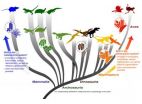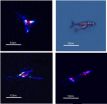(Press-News.org) Hospitals don't always take into account the full costs of implementing new electronic health record systems and should be better prepared if they are to maximise the benefits, finds research published online in the Journal of the American Medical Informatics Association (JAMIA).
Electronic health record (EHR) systems can improve the safety, quality, and efficiency of healthcare in hospitals, and their adoption is a priority for the UK and US governments.
But despite their promise and the existence of EHRs in UK primary care for several decades, UK hospitals have been slow to adopt the technology, citing cost as a significant barrier, say the study authors.
As part of England's £12.7 billion (US$20 billion) National Programme for IT (NPfIT), three EHR systems were procured centrally: iSOFT's Lorenzo Regional Care; Cerner's Millennium; and CSE's RiO. But their implementation has been fraught with difficulty.
And the English government announced the dismantlement of the programme in September 2011, after a Cabinet Office review concluded it was "not fit to provide the modern IT services that the NHS needs."
The researchers evaluated the implementation of the three systems in 12 diverse healthcare organisations, in three different regions of the country, and at different stages of implementing these systems.
They also carried out 41 semi- structured interviews with 36 hospital staff, members of the local implementation team, and those involved in the implementation at a national level, between February 2009 and January 2011.
They identified four overarching cost categories associated with implementing an EHR system: infrastructure (such as hardware and software); personnel (such as a project managers and training teams); estates/facilities (furniture, fittings and space); other (such as training materials).
Many factors affected these costs, with different hospitals choosing varying amounts and types of infrastructure, diverse training approaches for staff, and different software applications.
Some of the hospitals incurred significant costs in testing the software while some spent a lot of money training clinicians and administrative staff to use the new system, using either one-to-one, classroom, or mass training sessions, or different combinations of both.
The decision to backfill staff on the wards varied among hospitals, with one hospital stumping up a one-off cost of £750,000 (over US$1.1 million) to provide cover for clinical staff who were being trained to use EHRs, while another spent no money at all on providing cover.
The analysis showed that, overall, implementation proceeded at a much slower pace than expected, with many challenges along the way.
Out of the four main categories of associated expenditure identified, hospitals were most likely to cut back on training and implementation costs.
Certain factors were systematically under-appreciated in project planning, including the need to back fill staff due to lost productivity, and the need to test the system due to inadequate vendor testing.
"With cost considered one of the most significant barriers, it is important for hospitals and governments to be clear from the outset of the major cost categories involved and the factors that may impact on these costs," conclude the authors.
If organisations don't take these factors on board, they risk failure, the authors warn.
"Failure to adequately train staff or to follow key steps in implementation has preceded many of the failures in this domain, which can create new safety hazards," they say.
INFORMATION:
[A qualitative study identifying the cost categories associated with electronic health record implementation in the UK Online First doi:10.1136/amiajnl-2013-002404]
Hospitals not always prepared for full costs of implementing electronic patient records
Costs of training, facilities, and infrastructure also need to be accounted for
2014-02-13
ELSE PRESS RELEASES FROM THIS DATE:
Revision to rules for color in dinosaurs suggests connection between color and physiology
2014-02-13
New research that revises the rules allowing scientists to decipher color in dinosaurs may also provide a tool for understanding the evolutionary emergence of flight and changes in dinosaur physiology prior to its origin.
In a survey comparing the hair, skin, fuzz and feathers of living terrestrial vertebrates and fossil specimens, a research team from The University of Texas at Austin, the University of Akron, the China University of Geosciences and four other Chinese institutions found evidence for evolutionary shifts in the rules that govern the relationship between ...
Many stroke patients on 'clot-busting' tPA may not need long stays in the ICU
2014-02-13
A Johns Hopkins study of patients with ischemic stroke suggests that many of those who receive prompt hospital treatment with "clot-busting" tissue plasminogen activator (tPA) therapy can avoid lengthy, restrictive monitoring in an intensive care unit (ICU).
The study challenges the long-standing protocol that calls for intensive monitoring, mostly done in ICUs, for the first 24 hours after tPA infusion to catch bleeding in the brain, a side effect seen in 6 percent of patients treated with the medication.
Results show that a relatively simple measure of stroke severity ...
Whales viewed from space
2014-02-13
High-resolution satellite images may be a useful tool for counting whale populations for conservation purposes, according to a study published in PLOS ONE on February 12, 2014 by Peter Fretwell from British Antarctic Survey, UK, and colleagues.
In the study, the authors selected one of the largest southern right whale populations, breeding off the Argentinian coast. The population was selected, due to its large size and tendency to bask near the surface in large aggregations around sheltered coastal waters during breeding season. Scientists used this population to test ...
Mathematical beauty activates same brain region as great art or music
2014-02-13
People who appreciate the beauty of mathematics activate the same part of their brain when they look at aesthetically pleasing formula as others do when appreciating art or music, suggesting that there is a neurobiological basis to beauty.
There are many different sources of beauty - a beautiful face, a picturesque landscape, a great symphony are all examples of beauty derived from sensory experiences. But there are other, highly intellectual sources of beauty. Mathematicians often describe mathematical formulae in emotive terms and the experience of mathematical beauty ...
Two strategies for accurate dart throwing
2014-02-13
Timing of dart release or hand position may improve dart throwing accuracy, according to a study published in PLOS ONE on February 12, 2014 by Daiki Nasu from Osaka University, Japan and colleagues.
Two major strategies are attributed to accurate throwing: timing the object release, and the using hand positioning at release to compensate for releasing the object at variable times. To better understand these strategies, researchers investigated whether expert dart players utilize hand movement that can compensate for the variability in their release timing. The study compared ...
Ancient reptile birth preserved in fossil
2014-02-13
Ichthyosaur fossil may show the earliest live birth from an ancient Mesozoic marine reptile, according to a study published February 12, 2014 in PLOS ONE by Ryosuke Motani from the University of California, Davis, and colleagues.
Ichthyosaurs were giant marine reptiles that evolved from land reptiles and moved to the water. Scientists report a new fossil specimen that belongs to Chaohusaurus (Reptilia, Ichthyopterygia), the oldest of Mesozoic marine reptiles that lived approximately 248 million years ago. The partial skeleton was recovered in China and may show a live ...
Satellites help spot whales
2014-02-13
Scientists have demonstrated how new satellite technology can be used to count whales, and ultimately estimate their population size. Using Very High Resolution (VHR) satellite imagery, alongside image processing software, they were able to automatically detect and count whales breeding in part of the Golfo Nuevo, Peninsula Valdes in Argentina.
The new method, published this week in the journal PLoS ONE, could revolutionise how whale population size is estimated. Marine mammals are extremely difficult to count on a large scale and traditional methods, such as counting ...
Brain process takes paper shape
2014-02-13
A paper-based device that mimics the electrochemical signalling in the human brain has been created by a group of researchers from China.
The thin-film transistor (TFT) has been designed to replicate the junction between two neurons, known as a biological synapse, and could become a key component in the development of artificial neural networks, which could be utilised in a range of fields from robotics to computer processing.
The TFT, which has been presented today, 13 February, in IOP Publishing's journal Nanotechnology, is the latest device to be fabricated on paper, ...
Doctors are missing chance to diagnose COPD in up to 85 percent of cases, study finds
2014-02-13
A retrospective, 20-year study led by researchers at Plymouth University Peninsula Schools of Medicine and Dentistry shows that in up to 85 per cent of patients with chronic obstructive pulmonary disease (COPD) the underlying disease was being overlooked. Missed opportunities occur commonly in both primary and secondary care. The paper demonstrates the pointers to help GP to come to a earlier diagnosis. The findings are published in The Lancet Respiratory Medicine today, Thursday 13th February 2014.
The study encompassed almost 39,000 patients and showed that, in the ...
Cancer researchers discover pre-leukemic stem cell at root of AML, relapse
2014-02-13
(TORONTO, Canada – Feb. 12, 2014) – Cancer researchers led by stem cell scientist Dr. John Dick have discovered a pre-leukemic stem cell that may be the first step in initiating disease and also the culprit that evades therapy and triggers relapse in patients with acute myeloid leukemia (AML).
The research, published online today in Nature is a significant leap in understanding the steps that a normal cell has to go through as it turns into AML, says Dr. Dick, and sets the stage to advance personalized cancer medicine by potentially identifying individuals who might benefit ...
LAST 30 PRESS RELEASES:
Collaborative study uncovers unknown causes of blindness
Inflammatory immune cells predict survival, relapse in multiple myeloma
New test shows which antibiotics actually work
Most Alzheimer’s cases linked to variants in a single gene
Finding the genome's blind spot
The secret room a giant virus creates inside its host amoeba
World’s vast plant knowledge not being fully exploited to tackle biodiversity and climate challenges, warn researchers
New study explains the link between long-term diabetes and vascular damage
Ocean temperatures reached another record high in 2025
Dynamically reconfigurable topological routing in nonlinear photonic systems
Crystallographic engineering enables fast low‑temperature ion transport of TiNb2O7 for cold‑region lithium‑ion batteries
Ultrafast sulfur redox dynamics enabled by a PPy@N‑TiO2 Z‑scheme heterojunction photoelectrode for photo‑assisted lithium–sulfur batteries
Optimized biochar use could cut China’s cropland nitrous oxide emissions by up to half
Neural progesterone receptors link ovulation and sexual receptivity in medaka
A new Japanese study investigates how tariff policies influence long-run economic growth
Mental trauma succeeds 1 in 7 dog related injuries, claims data suggest
Breastfeeding may lower mums’ later life depression/anxiety risks for up to 10 years after pregnancy
Study finds more than a quarter of adults worldwide could benefit from GLP-1 medications for weight loss
Hobbies don’t just improve personal lives, they can boost workplace creativity too
Study shows federal safety metric inappropriately penalizes hospitals for lifesaving stroke procedures
Improving sleep isn’t enough: researchers highlight daytime function as key to assessing insomnia treatments
Rice Brain Institute awards first seed grants to jump-start collaborative brain health research
Personalizing cancer treatments significantly improve outcome success
UW researchers analyzed which anthologized writers and books get checked out the most from Seattle Public Library
Study finds food waste compost less effective than potting mix alone
UCLA receives $7.3 million for wide-ranging cannabis research
Why this little-known birth control option deserves more attention
Johns Hopkins-led team creates first map of nerve circuitry in bone, identifies key signals for bone repair
UC Irvine astronomers spot largest known stream of super-heated gas in the universe
Research shows how immune system reacts to pig kidney transplants in living patients
[Press-News.org] Hospitals not always prepared for full costs of implementing electronic patient recordsCosts of training, facilities, and infrastructure also need to be accounted for



